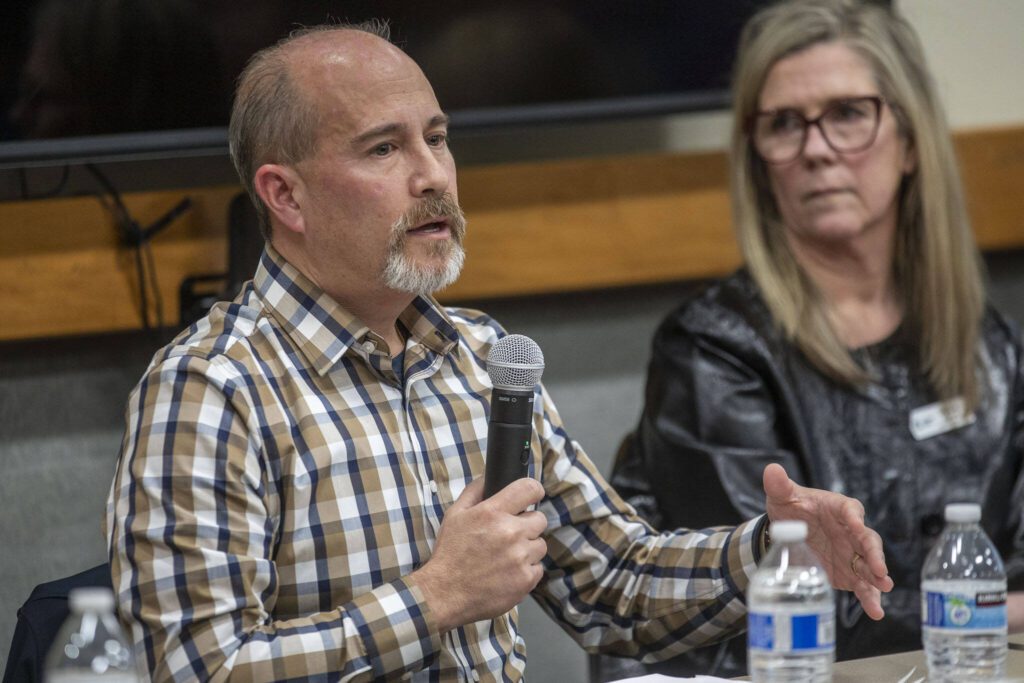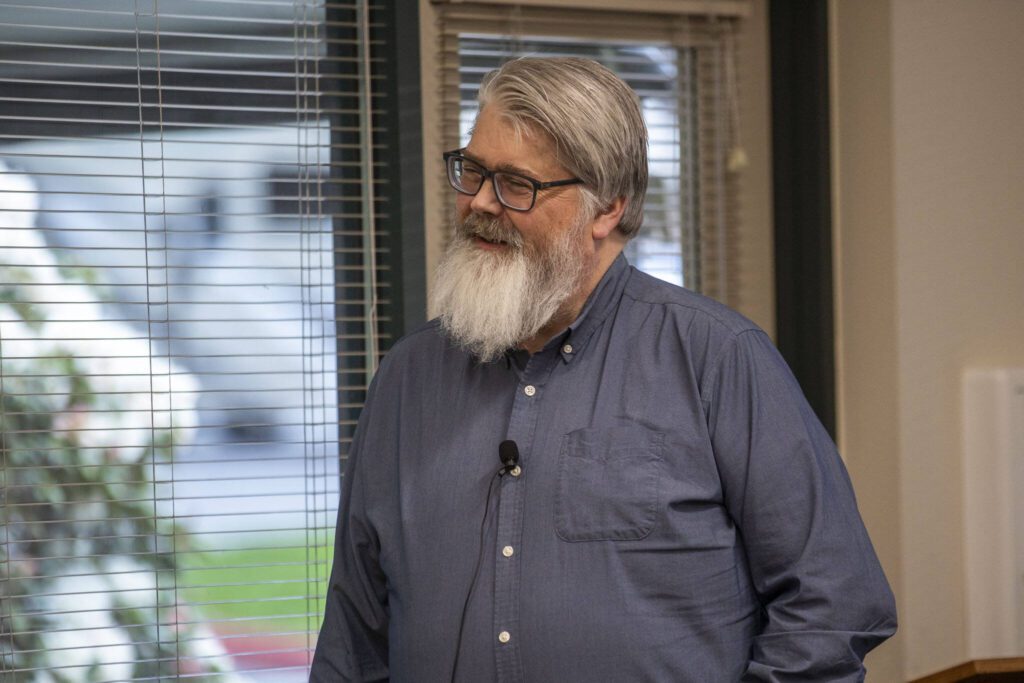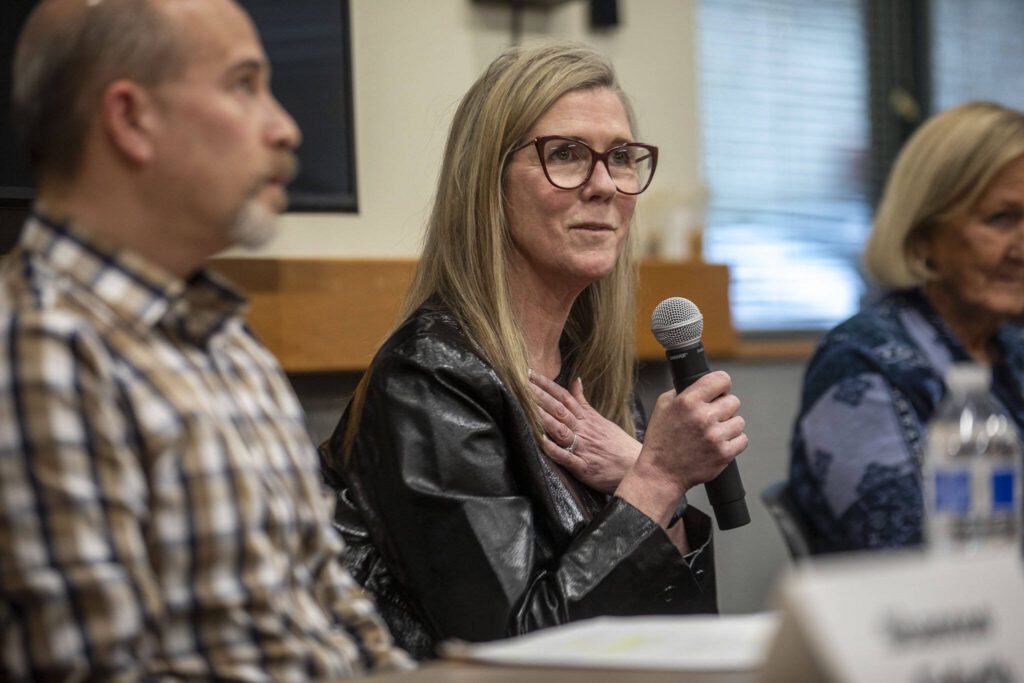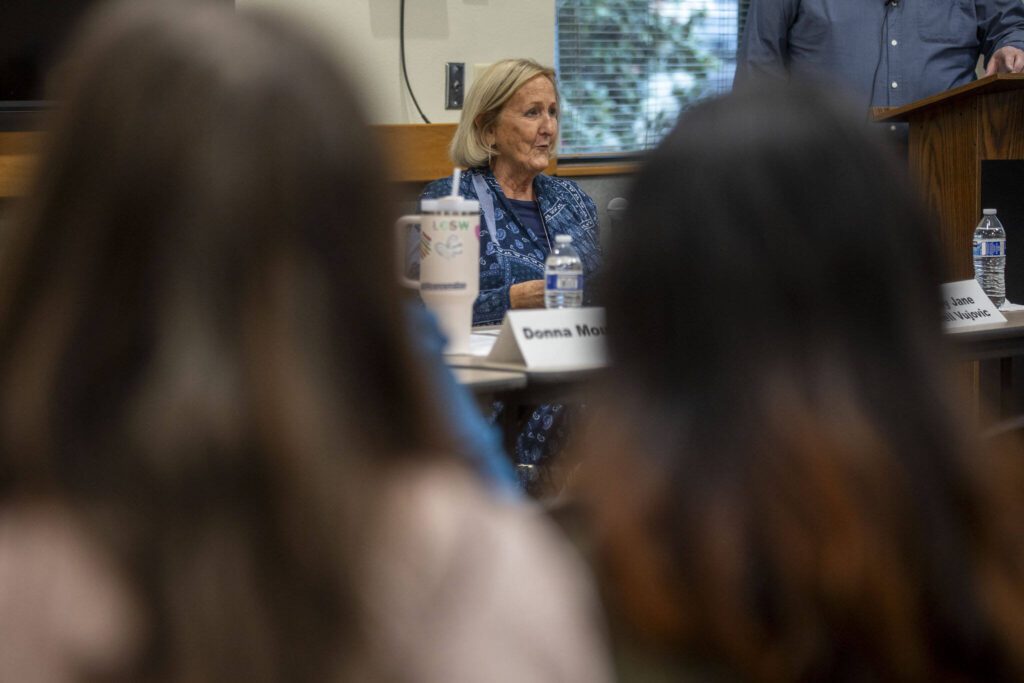MUKILTEO — In Mary Jane Brell Vujovic’s 52 years working in human services, she’s never seen anything like the current drug and homelessness crises in Snohomish County.
Brell Vujovic, the director of Snohomish County’s human services department, said the county is in “uncharted territory,” with drugs like fentanyl reshaping the landscape of housing and homelessness.
At the Mukilteo Library on Thursday night, The Daily Herald hosted a forum discussing homelessness in Snohomish County with four local human services leaders. The Herald’s opinion editor Jon Bauer moderated the discussion.
The point-in-time count in January 2023 found 1,285 people were homeless in Snohomish County. New statistics from this January’s annual homelessness census are expected to be released next month.
In 2023, there were 333 drug overdoses in Snohomish County, according to the county medical examiner’s office.
Speakers at the forum discussed tactics to face the manifold crisis and addressed the challenges that remain.
Dan Templeman, the retired Everett police chief and new senior executive in the mayor’s office, said powerful drugs like fentanyl have required the city to get creative.
Since February, a city task force has focused on the drug crisis. By the end of its nine meetings, the task force will recommend ideas and solutions for the mayor and City Council to consider. The task force will hold its last meeting in June.
From a police perspective, Templeman said embedded social workers have established themselves in the police department. Everett was one of the first cities on the West Coast to implement them in 2015, he said.
Everett plans to launch an alternative response team in the coming years. The program would send out a social worker in response to 911 calls when a police officer or firefighter isn’t the best option.
The police uniform can intimidate people on the streets, so sending out a social worker who isn’t trying to enforce the law can make it much easier for people to accept help, Templeman said.
In April, the city acquired $4.5 million in federal funding for the program.
Housing is the foundation to solving the homelessness and drug crises, Brell Vujovic said. Human service workers follow a model called Housing First. Sometimes criticized, Housing First prioritizes permanent and stable housing first before addressing other issues, like drug addiction or unemployment.
“If you can help people get a roof over their head, they are in a position to get over other challenges,” she said.
The Housing First model isn’t about getting someone housed, then abandoning them, Brell Vujovic said. Organizations stay engaged with people to ensure they can access other services like drug treatment, employment and education.
But some disagree with the model, especially in light of drug-contaminated housing that recently displaced dozens of residents in Everett.
In October, the county health department ordered the evacuation of Clare’s Place, a supportive housing facility run by Catholic Community Services, after tests showed unsafe levels of drugs in the building. For four months, Clare’s Place remained closed. In February, residents moved back into their apartments.
In 2022, Snohomish County purchased two motels in Everett and Edmonds to turn them into temporary housing shelters.
The opening of the so-called “New Start Centers” has long been delayed due to unsafe levels of meth contamination in the buildings discovered prior to the purchase of the motels.
The Snohomish County Council debated requiring drug treatment for people seeking housing at the new projects. The ordinance failed, with County Executive Dave Somers arguing in August 2022 it would just prevent people from accessing necessary housing.
Brell Vujovic said the county is currently “wrapping up” the remediation process. She anticipates the centers will open in 2025, providing 74 units in total.
At the forum, panelists debated the merits of requiring drug treatment to enter supportive housing and contrasting the realities of the Housing First model.
“We always love to have our families clean and sober,” said Shannon Goforth, executive director of Sound Pathways, a nonprofit supporting people in recovery from drug addiction.
But it isn’t always realistic to expect someone to be able to easily break away from fentanyl and meth addictions, she said.
“That’s an ideal world,” Templeman said. “We have to face reality.”
Donna Moulton, the CEO of Housing Hope, has dealt with drug contamination in affordable housing. She said it’s expensive to remediate, costing as much as $60,000 per unit.
“That’s $60,000 that we don’t have,” she said.
Moulton said her organization “struggles” with the idea of requiring drug treatment to enter housing.
To make any big changes in life, like going into drug treatment, the most important thing is having a safe and stable place to live, Moulton said.
Panelists affirmed that it would be preferred to require drug treatment to enter housing, but the potency of modern drugs often prevents that.
“Anything we can do to help people get into the treatment that they need, we should be doing,” Templeman said. “But that shelter and housing is also critically important.”
The panelists said they remain committed to doing all they can to address homelessness.
“As long as there is breath in their lungs,” Goforth said, “there is hope.”
Correction: A previous version of this story misstated when Everett’s alternative response program would launch.
Jenelle Baumbach: 360-352-8623; jenelle.baumbach@heraldnet.com; Twitter: @jenelleclar.
Talk to us
> Give us your news tips.
> Send us a letter to the editor.
> More Herald contact information.































